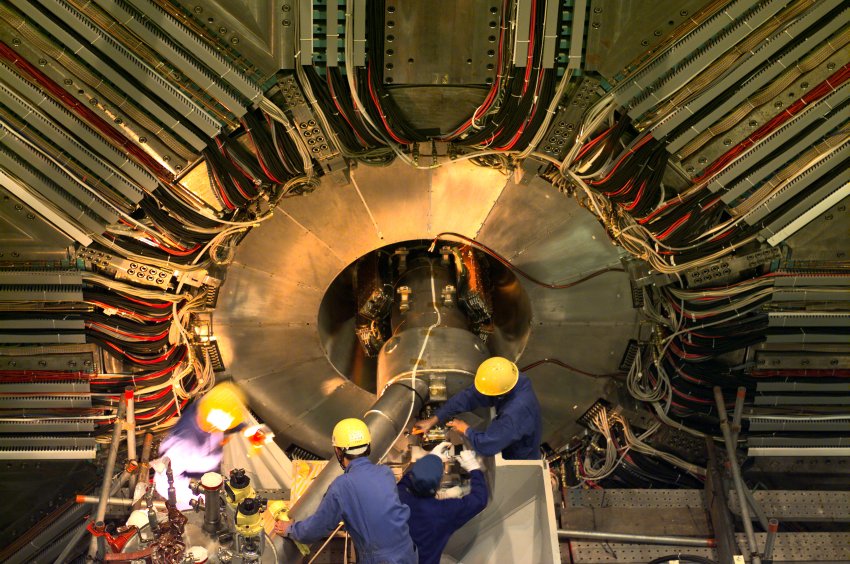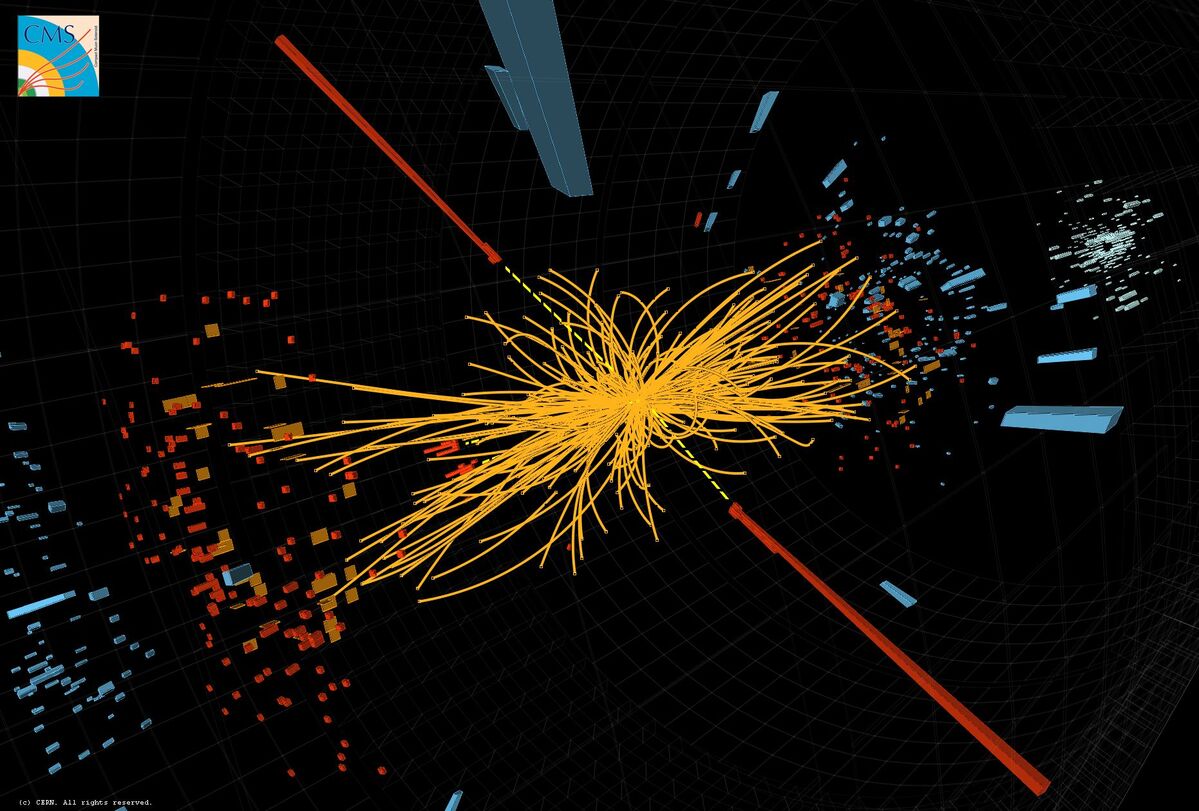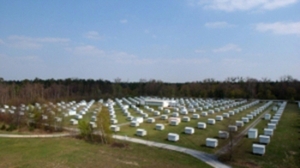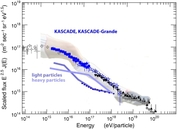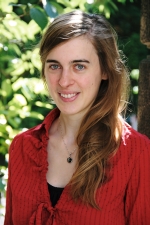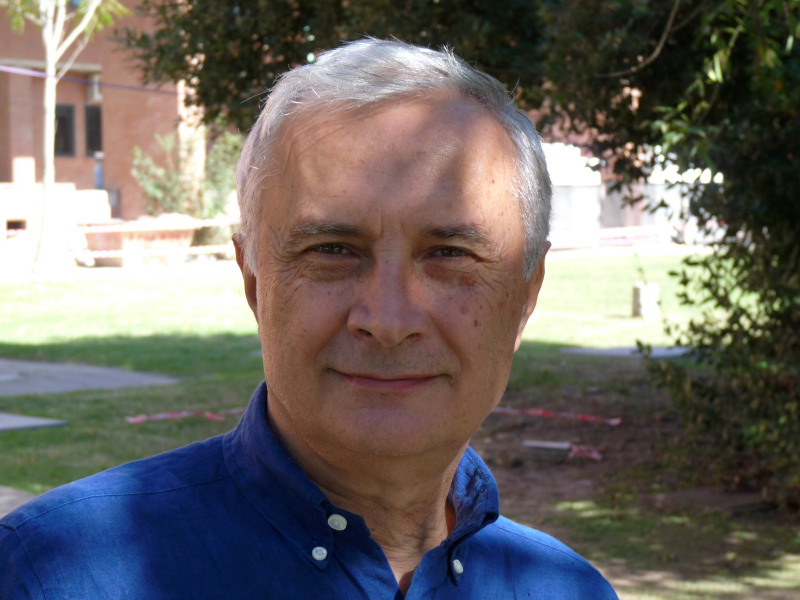22/07/2013 - New Measurement of the Coupling Constant of the Strong Interaction
Scientists from the CMS experiment at the Large Hadron Collider (LHC) near Geneva announced a new measurement of the coupling constant of the strong interaction, ready in time for presentation at the international conference of the European Physical Society in Stockholm.
The strong force, which is responsible for the binding of protons and neutrons inside of the atomic nucleus, becomes weaker in interactions at higher energies due to quantum corrections. This "running" of the strong coupling constant has been observed experimentally at different experiments, and was now measured for the first time at the highest available energies at the LHC.
KCETA scientists have significantly contributed to these new measurements, which confirm the decrease with energy of the strong coupling constant, as predicted by the Standard Model of particle physics. Deviation would have been a sign for new physics originating from new particle in the quantum loops. The new measurements are consistent within errors with the earlier measurements.
19/07/2013 - Editor's Pick of Journal of Physics G
The article "Validation of a model for Radon-induced background processes in electrostatic spectrometers" for the KATRIN experiment of freshly-graduated-of-today Dr. Nancy Wandkowsky is June 2013 'Publisher's pick' of the Journal of Physics G. One of the picture of this paper (top picture on left) even made the cover of the August issue (bottom picture on left).
Read the article on the website of the Journal of Physics G,
see also arXiv:1304.1379
18/06/2013 - Quark quartet opens fresh vista on matter
Physicists have resurrected a particle that may have existed in the first hot moments after the Big Bang. Arcanely called Zc(3900), it is the first confirmed particle made of four quarks, the building blocks of much of the Universe’s matter.
Until now, observed particles made of quarks have contained only three quarks (such as protons and neutrons) or two quarks (such as the pions and kaons found in cosmic rays). Although no law of physics precludes larger congregations, finding a quartet expands the ways in which quarks can be snapped together to make exotic forms of matter.
“The particle came as a surprise,” says Zhiqing Liu, a particle physicist at the Institute of High Energy Physics in Beijing and a member of the Belle collaboration, one of two teams claiming the discovery in papers published this week in Physical Review Letters 1, 2. Housed at the High Energy Accelerator Research Organization (KEK) in Tsukuba, Japan, the Belle detector monitors collisions between intense beams of electrons and their antimatter counterparts, positrons. These crashes have one-thousandth the energy of those at the world’s most powerful accelerator, the Large Hadron Collider (LHC) at CERN near Geneva, Switzerland, but they are still energetic enough to mimic conditions in the early Universe. Collision rates at KEK are more than twice those at the LHC, and they occasionally give birth to rare particles not found in nature today — ephemeral creatures that wink into existence for an instant and then fall to pieces.
Some of that subatomic shrapnel matches what would be expected from the breakdown of a particle containing four quarks bound together: two especially heavy ‘charm’ quarks and two lighter quarks that give the particle a charge. With 159 of these Zc(3900) particles in hand, the Belle team reports that the chance that its result is a statistical fluke is less than 1 in 3.5 million1. “They have clear evidence of a particle with four quarks,” says Riccardo Faccini, a particle physicist at the Sapienza University of Rome.
The new particle has also been vouched for by a second experiment, the Beijing Spectrometer III (BESIII) at the Beijing Electron Positron Collider. BESIII found 307 Zc(3900) particles, sifted from 10 trillion trillion electron–positron collisions2. “This gives credence to all of the other particles that Belle has seen,” says Fred Harris, a particle physicist at the University of Hawaii in Manoa and a spokesman for BESIII. In 2008, Belle found another four-quark candidate3, and in 2011, it saw two other particles that may have been made of four ‘bottom’ quarks 4— but no other particle colliders have confirmed those sightings.
No one questions the number of quarks in the latest particle. More controversial is their arrangement, which could have implications for quantum chromodynamics, the theory describing the strong force that connects quarks. Theorists fall primarily into two camps.
One side proposes that the particle is actually a union of two ordinary particles called mesons, which contain one quark and one antiquark. Zc(3900) particles could be made up of two mesons joined by a loose connection to form a molcule-like structure (see ‘Quark soup’).
Other theorists have tentatively labelled the new particle a true tetraquark — four quarks stuck together tightly to form a compact ball. Within the ball, two quarks are bound together, as are two antiquarks. Such pairings do not occur in any known particle and would thus introduce new building blocks of matter — with the potential to guide computer simulations aimed at working out all the structures that quarks can form.
Proponents of the tetraquark theory point out that a ‘molecule’ made of mesons should split easily into two halves, and that such a breakdown has not appeared in the data. “The signature of a molecule is not seen, which favours the tetraquark picture,” says Ahmed Ali, a particle physicist at DESY, Germany’s high-energy physics laboratory in Hamburg. But the experiments’ margin of error is still too great to rule out the possibility of molecular mesons breaking down. Another way to test the two theories would be to look for other particles that each predicts should exist.
Hoping to end the debate, researchers at BESIII are continuing to dig through data collected since their first experimental run in December and January. Depending on what they find, the unmasking of Zc(3900) may have to wait for the new, more powerful version of the Belle detector planned to come online in 2015.
For more information:Nature, PhysicsWorld.com
Scientific articles:Phys. Rev. Lett. 110, 252001 (2013)(arXiv),Phys.Rev. Lett. 110, 252002 (2013)(arXiv)
22/07/2013 - ATLAS and CMS receive the prestigious EPS HEPP-Prize
The High Energy and Particle Physics Prize of the europian physical society awarded the teams of researchers of the experiments ATLAS and CMS. The collaboration received the award along with the speakers Micheal Della Negra (Imperial London), Peter Jenni (CERN and Freiburg University) and Tejinder Virdee (Imperial College London) for the discovery of a new heavy paticle with the ability of the long-sought Higgs-Particle.
Karl Jacob, spokesman for the German ATLAS group: ¨The discovery of the Higgs-Particle by the two experiments ATLAS and CMS provides a sensational scientific breakthrough. With this prize will be appreciated all the speakers, physicists and engineers that have worked on those experiments.¨
On 4 July 2012, the two teams of the experiments from ATLAS and CMS announced the dicovery of the Higgs-Particle. Scientists have been looking for this particle for more than 40 years- it is the last piece missing to the puzzle with the name Standart Model of the particle physic. The field introduced from Peter Higgs in 1964, is connected with this particle and it spreed in the all univers and is suppossed to grat this elementary particles in their mass.
Achim Steel, spokesman for the German CMS group:¨The dicovery of the Higgs-Particle is the result decades of preparation. Hundredes of physicits , engineers and technicians from Germany were and are involved in the development, establishment and operation of experiments to detect the Higgs- Particle in a huge amount of data. Each individ has made his contribution and may feel this award as a personal honor.¨
The High Energy and Particle Pahysics Prize is given for outstanding contributions to elementary particle physics. The award ceremony takes place on the EPS HEP 2013 conference on 22 July in Stockholm.
With the dicovery of the Higgs- Particle begins a new area for the particle physic society. Despite its enormous success, the standard model of the particle physic can explain only a very small part of the universe. The majority of the mass of the universe seems to be composed from a dark matter, which is not included in this model. Many extensions are also trying to explain the dark matter and for that they need new Higgs-Particles. The dicovery from ATLAS and CMS could be used to porve the beginning of an even more exciting chapter in partcile physics.
More than 700 german scientists are involved in the LHC-experiment ATLAS and CMS, from them about 400 are young scientists. Significant parts of both detectors were designed and built in germany. Also in the operation and data analysis contributed german scientists. Under german leadership were and will be developed detektor technologies that will allow to speak more about the particle physik.
Researchers group in 16 universities, the Max-Planck-Institu for physics in Munich and the two Heimholtz research center DESY and KIT are working together on the two experiments. They are in paticular concentrated in the BMBF research focused in FSP - 101 (ATLAS) and FSP - 102 (CMS). Moreover they work together in the Heimholtz Alliance ¨Physics at the Terascale¨.
For more information: BMBF
23/04/2013 - Galactic Knee and Extragalactic Ankle
KIT’s KASCADE-Grande experiment has yielded the important result that a characteristic bend in the energy spectrum of high-energy cosmic rays, also called “knee”, is located at different energies for light and heavy primary particles. The position of the knee appears to vary with the charge of atomic nuclei: KASCADE-Grande detect-ed the “iron knee” at an energy that was 26 times higher than the knee in the spectrum of hydrogen nuclei. Latest findings of the KASCADE-Grande experiment reveal a flattening (also called “anti-knee” or “ankle”) of the spectrum of light primary particles above an energy of 1017 electron volts. This structure indicates the existence of a new, now extragalactic component of cosmic rays. This im-portant result in high-energy astrophysics was published recently by the scientists in the “Physical Review D” journal.
KASCADE-Grande was a measurement field for cosmic rays on the premises of KIT Campus North. “With KASCADE-Grande, we measured showers of secondary particles produced by primary particles of cosmic origin at energies of 1014 to 1018 electron volts,” explains Dr. Andreas Haungs who coordinates the KASCADE-Grande project at KIT. 1018 electron volts: This exceeds the energy reached by the largest particle accelerators on Earth by several orders of magnitude. The worldwide known and acknowledged experiment was shut down last year. But current analysis of the full data set again yielded a scientific highlight
The flux of cosmic rays, i.e. of primary particles that can probably be found anywhere in the universe, decreases strongly with increasing particle energy. Slightly above an energy of 1015 electron volts, the “slope” of energy decrease changes: This leads in a bend in the spectrum, the “knee” of cosmic radiation. KASCADE-Grande demonstrated that the knee occurs at different energies for light and heavy elements and that this difference is related to charge. But where does the knee come from and why does its cause depend on the charge of the cosmic particle? This might be explained by mag-netic fields in the vicinity of cosmic accelerators. Towards higher energies, they work more effectively for particles of higher charge. Moreover, our galaxy possesses a magnetic halo that prevents most of the particles from leaving our Milky Way. It was concluded from the results of KASCADE-Grande that the primary particles of cosmic rays can be generated and stored in our Milky Way up to energies around 1017 electron volts only. Particles of higher energy have their origin outside of the Milky Way. The transition from galactic to extragalactic cosmic radiation is assumed to lie in the energy range slightly above 1018 electron volts, at the so-called “ankle” of the spectrum. According to the above theory relating to the formation of the knee, the transition to mainly extragalactic cosmic radiation is supposed to become visible in the energy spectrum of light primary particles first, as these are the first to leave their home galaxy.
The identification of an ankle-like structure in the light component at relatively low energies favors theories predicting an early contribu-tion of extragalactic cosmic radiation. “Future results of other exper-iments studying the spectrum at highest energies will show whether the high-energy light primary particles measured by KASCADE-Grande really are atomic nuclei from another galaxy,” says Sven Schoo, the KIT diploma student who analyzed the data.
The recent results are published in the scientific journal “Physical Review D”, D 87, No. 081101 (R), 2013.
(For more information: KIT )
19/04/2013 - Erna Scheffler Sponsorship Award for one of the KIT Researchers
The physicist Dr. Susanne Mertens is granted the 2013 Erna Scheffler Sponsorship Award. Every two years, the Karlsruhe Soroptimist International Club donates this award to young women at KIT for extraordinary scientific achievements. The award is named after the first female judge at the Federal Constitutional Court in Germany, Dr. Erna Scheffler, who emphatically spoke up for equal opportunities of women. Journalists are cordially invited to come to the awards ceremony on Sunday, April 28, 11 hrs, at Schloss Gottesaue, Karlsruhe. (Kindly register using the form enclosed.)
This year, the Karlsruhe Soroptimist Club grants Dr. Susanne Mertens in the amount of EUR 500 for her Ph. D. thesis “Investigation of Background Processes in the Electrostatic Spectrometers of the KATRIN Experiment” written at the Institute of Experimental Nuclear Physics (ETP).
The Ph. D. thesis of the physicist Dr. Susanne Mertens focuses on background processes in the electrostatic spectrometers of the Karlsruhe Tritium Neutrino experiment KATRIN. This interdisciplinary experiment is aimed at determining as precisely as possible the mass of neutrinos that are elementary particles. For this purpose, interfering background processes have to be suppressed to the largest possible extent. Together with computer scientists of KIT, Susanne Mertens developed a special simulation software to model various formation mechanisms of background processes, to predict their dimension and character, and to determine their effect on the neutrino mass sensitivity of KATRIN. To reduce background processes due to stored electrons, Susanne Mertens, in cooperation with electrical engineers, designed a new method that is based on the so-called electron cyclotron resonance (ECR). Mertens tested this method successfully in the KATRIN pre-spectrometer. Provided that this method will be transferred successfully to the main spectrometer, a nearly background-free measurement of the neutrino mass will be possible.
This year’s Erna Scheffler sponsorship awards ceremony will be part of the celebrations of the 50th anniversary of the Karlsruhe Soroptimist International Club from April 26 to 28. Soroptimist International (SI) is the largest service organization of working women worldwide. SI was founded in Oakland, California/USA, in 1921 and today has about 90,000 members and about 3170 clubs in 125 countries all over the world. Presently, about 200 clubs with more than 6,000 members exist in Germany. Soroptimists are committed to the legal, social, and professional status of women. Their name comes from the Latin “sorores at optimum” and means “sisters wishing the best”. The Karlsruhe Club was established in 1963. The founding president was Dr. Erna Scheffler. Today, the club has 39 members working in different professions.
For this year’s awards ceremony on Sunday, April 28, 11 hrs, in the Velte-Saal of Schloss Gottesaue, Karlsruhe, the President of the Federal Constitutional Court, Professor Andreas Voßkuhle, took over the auspices again.
(For more information: KIT ![]() )
)
08/01/2013 - Helmholtz International Fellowship for Prof. Alberto Etchengoyen
The Instituto de Technologias en Deteccion y Astropaticulas ITeDA in Buenos Aires has joined the Alliance as Associated Member. In December 2012, ITeDa Director Alberto Etchegoyen was awarded one of the Helmholtz International Fellowships.
KIT ![]() recommended the physicists for this award of 20.000 Euro. This award also includes an invitation to conduct research in one or more Helmholtz Centres. Etchegoyen will be in the next two years and for several times a guest at the KIT Center Elementary Particle and Astroparticle Physics (KCETA
recommended the physicists for this award of 20.000 Euro. This award also includes an invitation to conduct research in one or more Helmholtz Centres. Etchegoyen will be in the next two years and for several times a guest at the KIT Center Elementary Particle and Astroparticle Physics (KCETA ![]() ). "Argentina is an emerging science and research place, especially for facilities working on astroparticle physics," says Professor Johannes Blümer, Spokeperson of KCETA. "The potential for cooperation is huge, as the international Pierre Auger-Observatory
). "Argentina is an emerging science and research place, especially for facilities working on astroparticle physics," says Professor Johannes Blümer, Spokeperson of KCETA. "The potential for cooperation is huge, as the international Pierre Auger-Observatory ![]() for Cosmic Ray has since 15 years awesomely demonstrated.“
for Cosmic Ray has since 15 years awesomely demonstrated.“
This offers him the opportunity to pursue research visits of his choice and to visit the Helmholtz Managment Academy, where he will have the opportunity to ineract with the next generation of Helmholtz science managers.
Press release: Helmholtz Association
Der Entwicklung des Universums auf der Spur
The new graduate school KSETA connects physicists and engineers in exciting international projects related to dark matter and dark energy, cosmic rays and elementary particles, such as the recently discovered Higgs boson. Learn more in reading the article published in the Badische Neueste Nachrichten (German only).

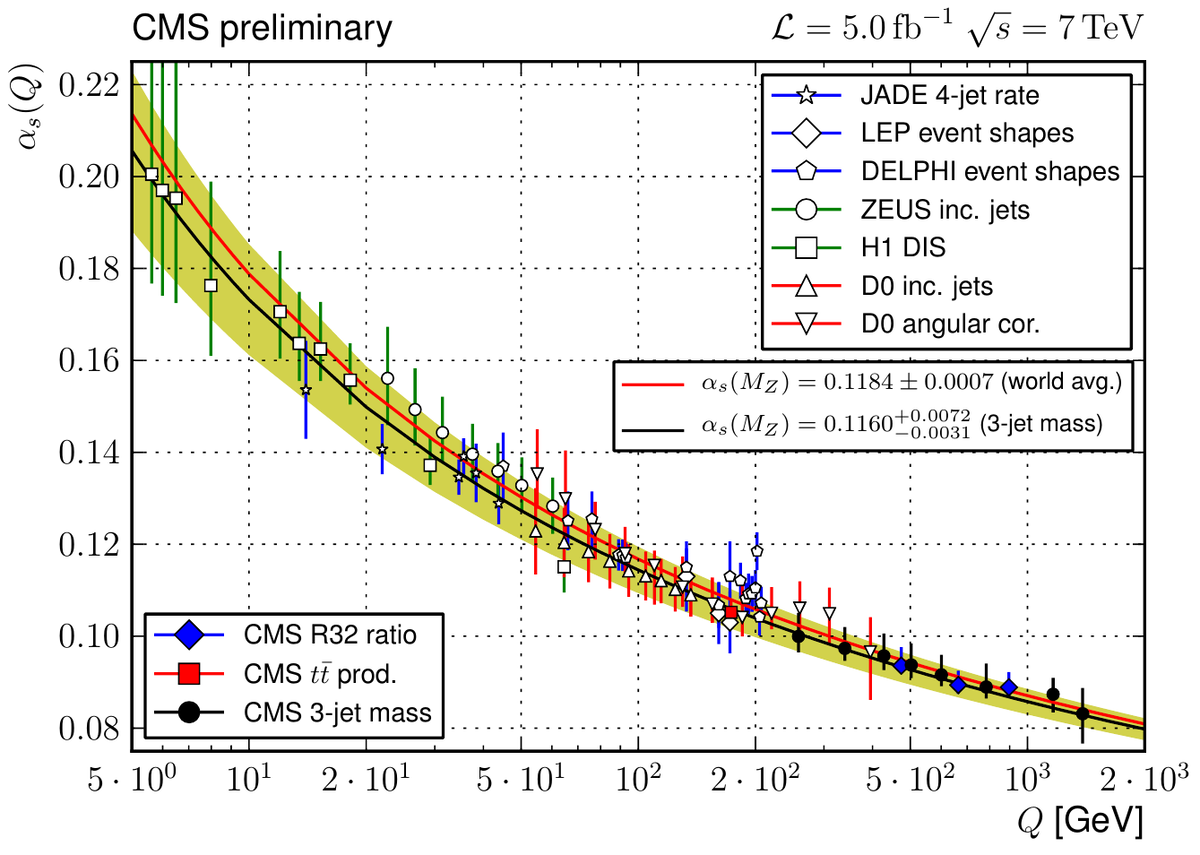
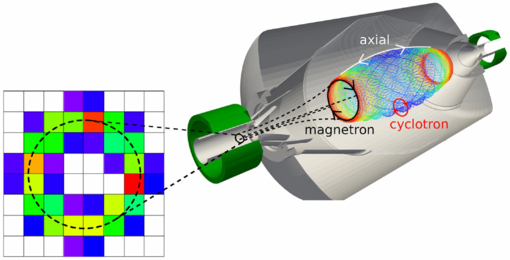
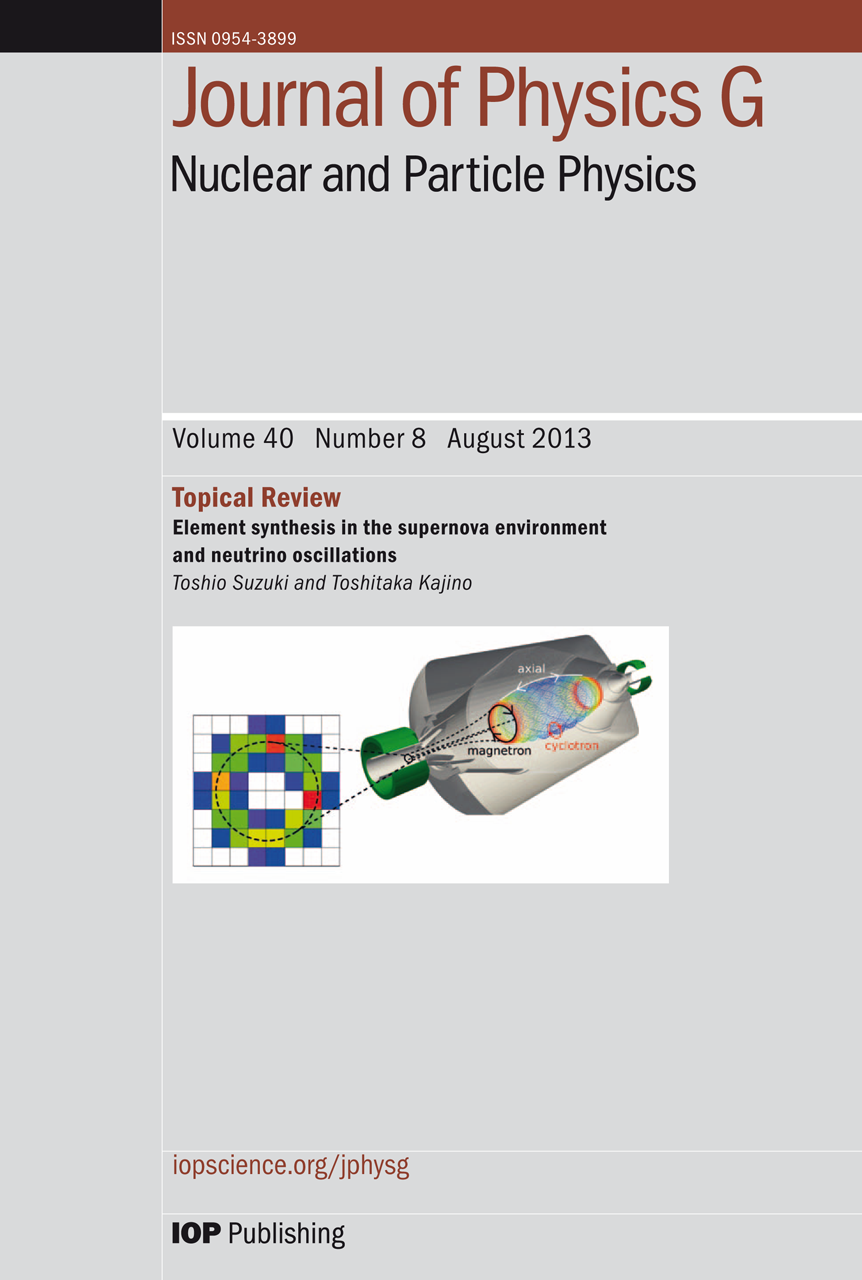
.jpg)
